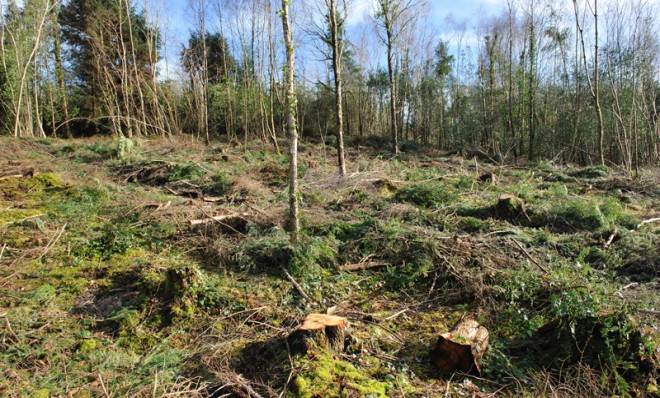How genomic mapping could boost crop yields
And potentially save the planet in the process


Scientists have discovered a gene in oil palms that regulates crop yield, a finding that could lead to improved plant productivity and mitigate the ecological toll of harvesting the widely used oil.
In a set of papers published Wednesday in the journal Nature, a team of American and Malaysian scientists explained how they finally mapped the genomic structure of the oil palm. Of the plant's 34,802 genes, scientists pinpointed one, named SHELL, that governs fruit size and oil yield. This discovery could boost oil output by as much as 30 percent.
The oil palm can produce three forms of the same fruit: one with no shell, one with a thick shell, and one somewhere in the middle. That middle fruit, called the Tenera, produces the most oil, and is therefore the most desirable. For growers and seed breeders, knowing beforehand which seeds have the gene structure to produce Tenera would translate into a guaranteed greater yield over the same acreage.
The Week
Escape your echo chamber. Get the facts behind the news, plus analysis from multiple perspectives.

Sign up for The Week's Free Newsletters
From our morning news briefing to a weekly Good News Newsletter, get the best of The Week delivered directly to your inbox.
From our morning news briefing to a weekly Good News Newsletter, get the best of The Week delivered directly to your inbox.
Though oil palms account for just 5 percent of the world's total acreage of oil-producing plants, the oil palm produces nearly half of all edible vegetable oil worldwide. That market share is only growing, too. While the industry produced just 1.7 million tons of palm oil in 1961, it now churns out a whopping 64 million tons, according to the New York Times.
With mounting demand, oil-producing countries have leveled wide swaths of acreage to accommodate more plants. And because the plants grow best in tropical areas, that has resulted in the deforestation of large sections of Southeast Asia's rain forests. Conservationists have also warned that expanding palm oil plantations threaten to wipe out pygmy elephants, orangutans, and other rare or endangered species.
From 2000 to 2009, Indonesia, the world's largest palm oil producer, cleared an average of 1,300 square miles per year to make way for new palm oil plantations, according to the Worldwatch Institute.
By identifying the gene that determines the meatiness of the palm oil's fruit, scientists said they could now test seeds before they are planted to determine which ones will produce the best trees.
A free daily email with the biggest news stories of the day – and the best features from TheWeek.com
"It takes a long time for these trees to produce fruit, and by being able to predict exactly what sort of fruit that tree will produce, it will greatly assist breeders," Professor Robert Martienssen, who worked on the study, told the BBC.
Similar research is already being used to develop better staple crops, like wheat and corn. India and Britain announced in March a joint venture to analyze crop genetics and find a way to boost crop yields. And earlier this month, scientists warned that European nations should look to genetic mapping as a way to improve crop yields and head off a projected production stagnation.
Jon Terbush is an associate editor at TheWeek.com covering politics, sports, and other things he finds interesting. He has previously written for Talking Points Memo, Raw Story, and Business Insider.
-
 ‘Care fractures after birth’
‘Care fractures after birth’instant opinion Opinion, comment and editorials of the day
-
 Shots fired in the US-EU war over digital censorship
Shots fired in the US-EU war over digital censorshipIN THE SPOTLIGHT The Trump administration risks opening a dangerous new front in the battle of real-world consequences for online action
-
 What will the US economy look like in 2026?
What will the US economy look like in 2026?Today’s Big Question Wall Street is bullish, but uncertain
